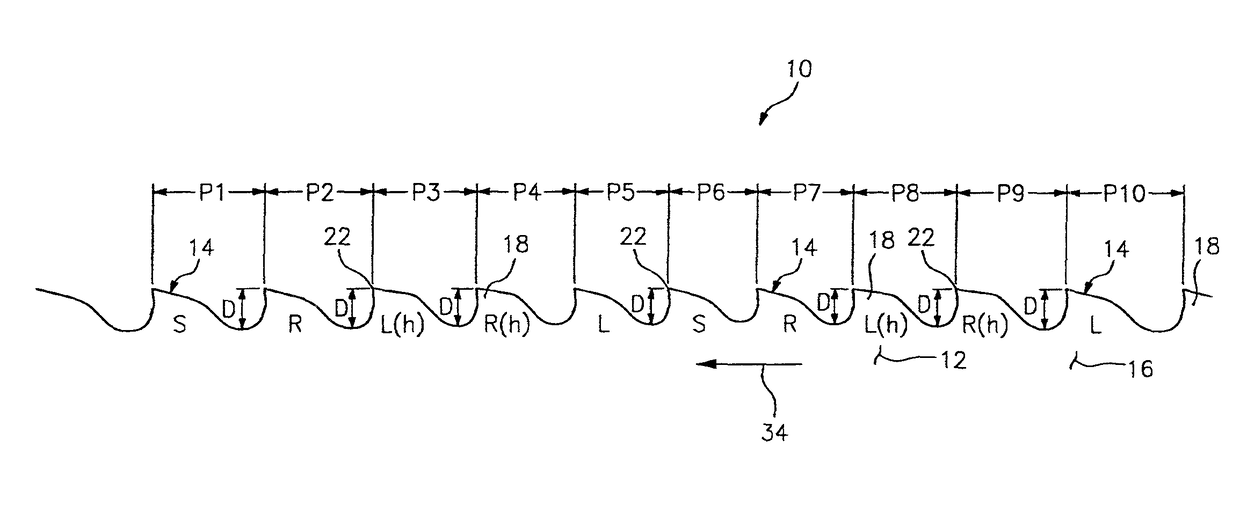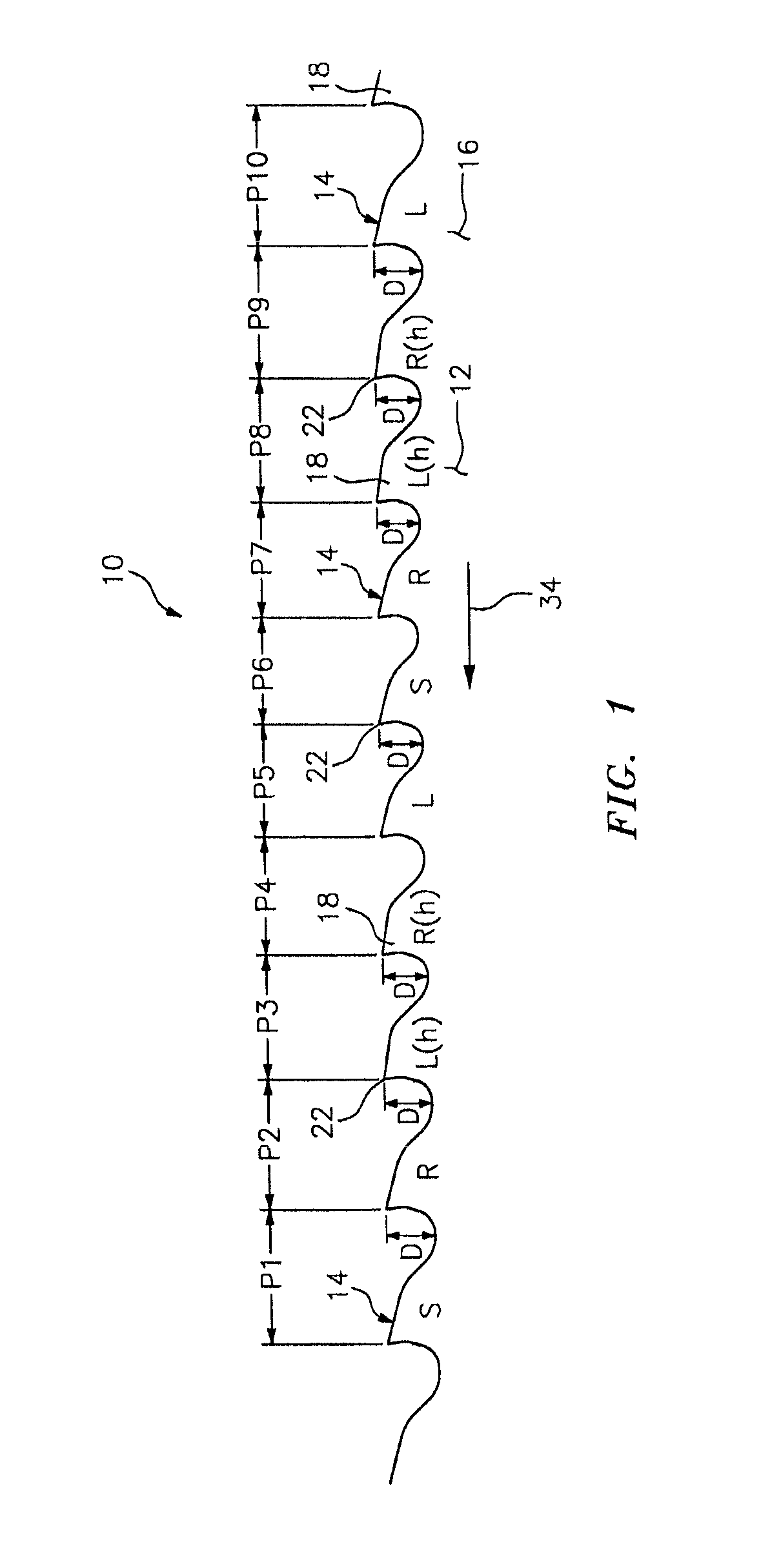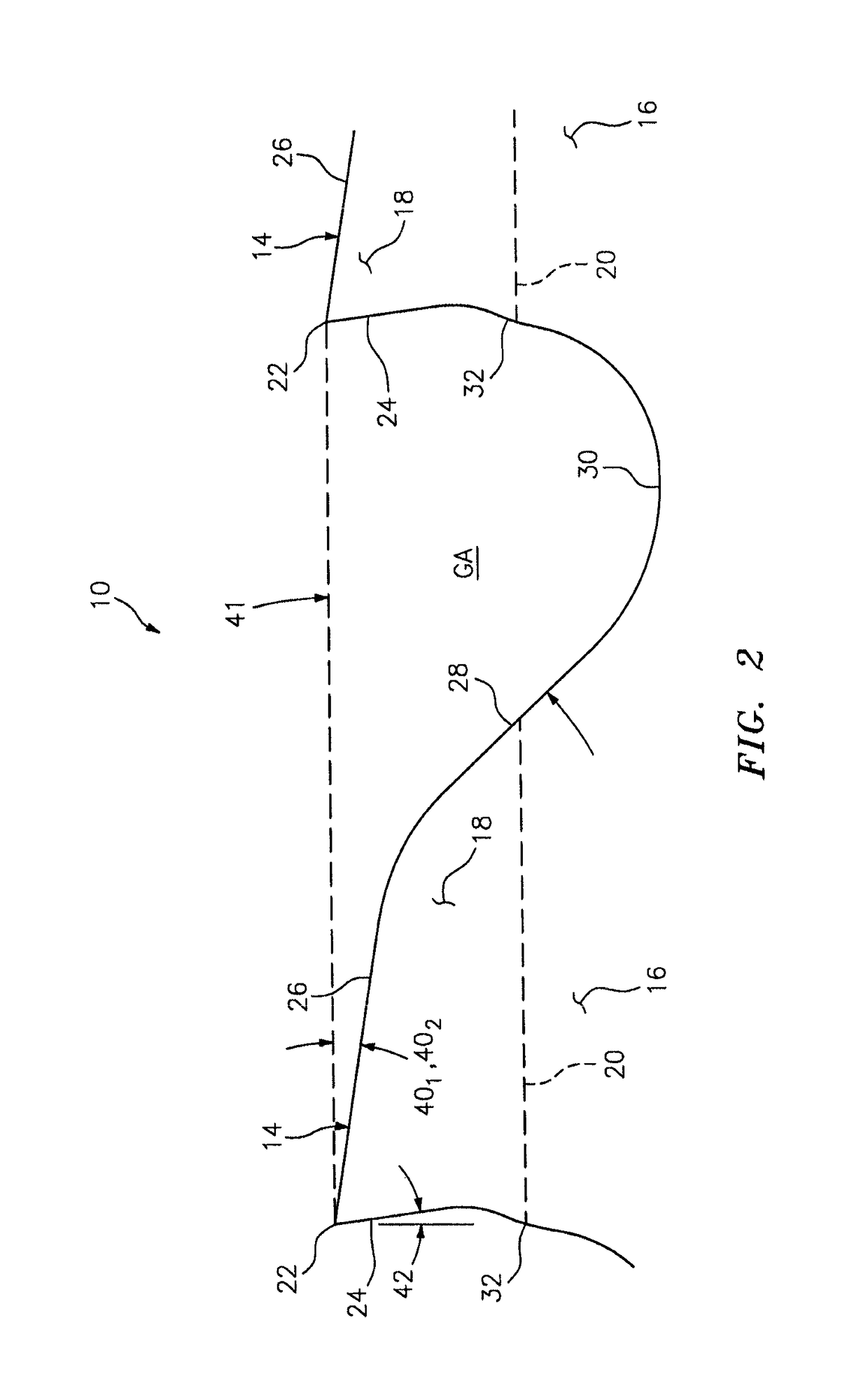Band saw blade
a band saw blade and band saw technology, applied in the field of band saw blades, can solve the problems of relatively high impact cutting force imparted to the cutting teeth, limited feed force and can vary, and the band saw blades used in such applications, and achieve the effects of robust tooth form, and improving the resistance to premature tooth stripping and chipping
- Summary
- Abstract
- Description
- Claims
- Application Information
AI Technical Summary
Benefits of technology
Problems solved by technology
Method used
Image
Examples
Embodiment Construction
[0032]In FIGS. 1 and 2, a band saw blade embodying the present invention is indicated generally by the reference numeral 10. The bade saw blade 10 comprises a blade body 12 and a cutting edge defined by a plurality of cutting teeth 14. In the illustrated embodiment, the band saw blade 10 is a bimetal blade including a relatively flexible spring steel backing 16 welded to a tool steel strip defining tool steel tips 18 on the teeth. As shown typically in broken lines in FIG. 2, a weld line 20 is formed between each tool steel cutting tip 18 and the spring steel backing 16.
[0033]As also shown typically in FIG. 2, each tooth includes a cutting tip 22, a rake face 24 located on one side of the tip, a primary clearance surface 26 located on an opposite side of the tip relative to the rake face, a secondary clearance surface 28 located on an opposite side of the primary clearance surface relative to the tip, a gullet 30 located on an opposite side of the secondary clearance surface 28 rela...
PUM
 Login to View More
Login to View More Abstract
Description
Claims
Application Information
 Login to View More
Login to View More - R&D
- Intellectual Property
- Life Sciences
- Materials
- Tech Scout
- Unparalleled Data Quality
- Higher Quality Content
- 60% Fewer Hallucinations
Browse by: Latest US Patents, China's latest patents, Technical Efficacy Thesaurus, Application Domain, Technology Topic, Popular Technical Reports.
© 2025 PatSnap. All rights reserved.Legal|Privacy policy|Modern Slavery Act Transparency Statement|Sitemap|About US| Contact US: help@patsnap.com



